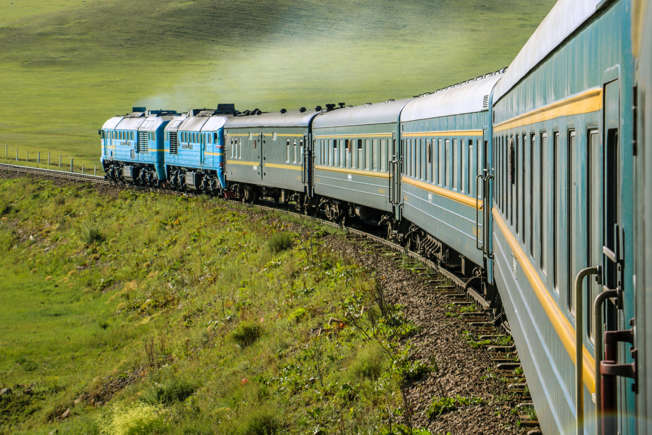The longest train journeys in the world
There is something uniquely profound about traveling long distances via Train/Railway. Unlike the compressed speed of air travel, railway offer a front-row seat to geography unfolding in real time: landscapes transforming with every passing hour, cultures shifting across every borders, and languages changing by the station.
The world’s most longest passenger train routes are not just feats of engineering and endurance—they are storytelling corridors, cooking, playing, stretching long spans across mountains, deserts, cities, and coastlines. We’ve assembled a list of the top 15 longest train journeys on the planet, ranked by distance traveled. Each journey is undertaken entirely by railway (train changes allowed, but no other transport modes), and many are epic multi-day odysseys.

Whether you’re a train enthusiast, an adventurer-at-heart, or a curious traveler mapping out your dream itinerary, these routes might just be included in your bucket list.
Adler traveling about 3,149 miles (5,067 kilometers), this route links the town of Adler in Russia on the shores of the Black Sea with Tomsk (Russia), one of Siberia’s major university hubs. The journey blends sunlit leisure destinations with intellectual life in cold, continental Siberia.
Russian trains, the country’s major train network, operates most of the trains that can be found on this list. The journey between Adler and Tomsk takes approximately nothing less than four days to complete, and connects popular resort areas with far-flung Siberian cities.
Departing Moscow and passing through Irkutsk, this route offers some of the most scenic stretches of the Trans-Siberian Train. It mixes many industrial cities with spiritual lands, and reflects both the historical and cultural importance of Russia’s easternmost regions.
Moscow to Severobaykalsk journey stretches over 3,446 miles (5,546 kilometers) and travels into less-accessible regions of Russia’s northern Lake Baikal. The town of Severobaykalsk leads on the Baikal–Amur Mainline (BAM), making this train one of the few regular services to link Moscow directly to BAM border.
Over about 4 complete days, passengers cross multiple time zones and varying topographies as they move from Moscow’s bustling urban core into Siberia’s remote northern reaches. It’s a long but essential train corridor bridging European Russia with the still-isolated lands of Buryatia.
Irkutsk to Anapa long-distance journey spans roughly 3,726 miles (5,996 kilometers), connecting Eastern Siberia’s cold, inland landscapes with the sun-drenched coastline of Anapa land on the Black Sea. It’s a vivid juxtaposition of environments and weather, both integral parts of Russia’s terrain.
Running primarily in warmer periods, this route allows Siberians a direct escape to vacation spots in Anapa. Despite the long five-and-a-half-day duration, the train is heavily used and reflects Russia’s cultural habit of seasonal internal migration by rail.
Moscow to Chita 3,856-mile (6,205-kilometer) route travels from Moscow through Russia’s central belt into the region of Zabaikalye on the country’s south-eastern border. The city of Chita serves as a gateway to the eastern frontier, marking the last major stop before the Trans-Siberian splits toward China or Russia’s Pacific coast city.
Riders of this journey traverse an array of Russian urban centers and rural stretches dominated by vast taiga forests. It’s a five-and-a-half-day trip blending comfortable urban stops with Siberian wilderness, showing the sheer magnitude of Russia’s eastward rail sprawl.
Adler to Severobaykalsk is one of the few long-distance trains that reaches the Baikal–Amur Mainline’s terminus, this service takes around five days or more to complete, and showcases the extent of Russian engineering. It provides rare access to the less-traveled northern parts of Baikal and even several remote towns.
The Moscow train to Neryungri from Russia’s capital city travels approximately 4,320 miles (6,950 kilometers) into Yakutia, one of Russia’s most remote and coldest regions. Over a six-day trip, travelers pass through central Russia, the Baikal–Amur Mainline, and end in a coal-mining town shrouded in snow for almost a year.
Though the actual railway changes en route, there is one carriage that runs all the way from Moscow to Neryungri town. The trip passes through many forests, frigid cities, and untamed wilderness rarely seen by outsiders.
Chita to Anapa journey is about 4,393 miles (7,070 kilometers), this lesser-known alternative to the Adler route reaches the beach town of Anapa by the Black Sea. Though more modest in tourist volume, Anapa city is a southern gem, and this train gives Siberians direct summer access to it.
Like other long Russian trains, this one operates with a carriage transferred across different railways. Running mostly in summer period, the journey (covered in six and a half days) is an example of Russia’s extensive rail infrastructure.
This 4,662-mile (7,504-kilometer) journey begins in Siberia’s Chita city and ends in the town of Adler. It connects frozen inland towns with several sunny holiday resorts on the Black Sea, and is especially popular during the summer season among Russian vacationers.
Over the course of seven days, passengers experience everything from steppe to mountain to ocean, with the route meandering through Russia’s central cities before arriving at Adler town. It’s a vibrant example of Russia’s domestic railway capability stretching across continents and climates.
The 4,805 miles (7,734 kilometers), this seasonal journey begins in the Caucasus Mountains on the border between Russia and Atlanta Georgia, and ends near the Baikal–Amur Mainline city in Russia’s east. Passengers travel across western Russia into the country’s remote eastern wilderness on a route few outside Russia have ever taken.
This train journey route uses “through-cars” attached to different services along the way, allowing seamless travel from Kislovodsk to Tynda. Despite train changes, the carriage stays consistent, delivering an uninterrupted experience that takes about six days to complete.
Moscow to Beijing is the fifth-longest train journey in the world stretches roughly 4,863 miles (7,826 kilometers). This route runs through Mongolia’s the capital city, Ulaanbaatar, and includes sweeping views of the Gobi Desert, Igbo Reserve, Siberian forests, and Chinese mountains. It is truly one of the most picturesque rail journeys on Earth today.
Only one weekly departure makes the full Moscow–Beijing journey via Ulaanbaatar way. It’s a slower route than the Trans-Manchurian (taking around five and a half days), but it rewards travelers with open desert landscapes and a more adventurous detour through central Asia continent.
This Moscow to Beijing via Harbin is approximately 5,584 miles (8,986 kilometers) in length, follows a slightly more northern path than its Mongolian counterpart. It veers into northeastern China, passing through the mid-city of Harbin, and connects Moscow with Beijing entirely by rail in about seven days.
The journey captures the stark transformation from the rural Siberian heartland region to China’s rapidly urbanizing landscape. Rolling into Beijing via Harbin, passengers witness dramatic cultural, languages and geographic shifts that make this version of the Trans-Siberian uniquely compelling.
The classic Trans-Siberian route from Moscow to Vladivostok is approximately 5,780 miles (9,300 kilometers) long. It takes passengers across the entirety of Russia, from its European roots through the Ural Mountains, across Siberia, and into the country’s far eastern Pacific coastline.
Spanning seven days, the trip offers a striking display of changing architecture, climates, and topography. It passes bustling cities, remote forests, and frozen lakes, providing a living cross-section of Russian life through the country’s longest continuous domestic railway line.
Covering around 6,380 miles (10,267 kilometers), this rare route connects Russia’s capital with North Korea’s Pyongyang via the full stretch of the Trans-Siberian Railway. It is the longest direct passenger train service operated without requiring a train change or detour. The full journey takes around 206 hours (or eight and a half days) to complete.
Although officially operational, the Moscow–Pyongyang train is difficult to access for most travelers due to tight visa policies and political tensions. Only select passengers can complete this journey that spans seven time zones across Eurasia.
The longest train journey in the world begins in the coastal Portuguese city of Lagos and ends in Singapore, traversing 13 countries and approximately 11,655 miles (18,755 kilometers). Although the journey requires several train changes, it remains entirely on rails and stretches from one side of Eurasia all the way to the other.
The expected travel time between Lagos and Singapore is around 21 days. The route includes famed lines like the Trans-Siberian Railway and modern Asian networks, offering a continuous overland rail passage from the Atlantic Ocean to Southeast Asia’s tropical shores.
